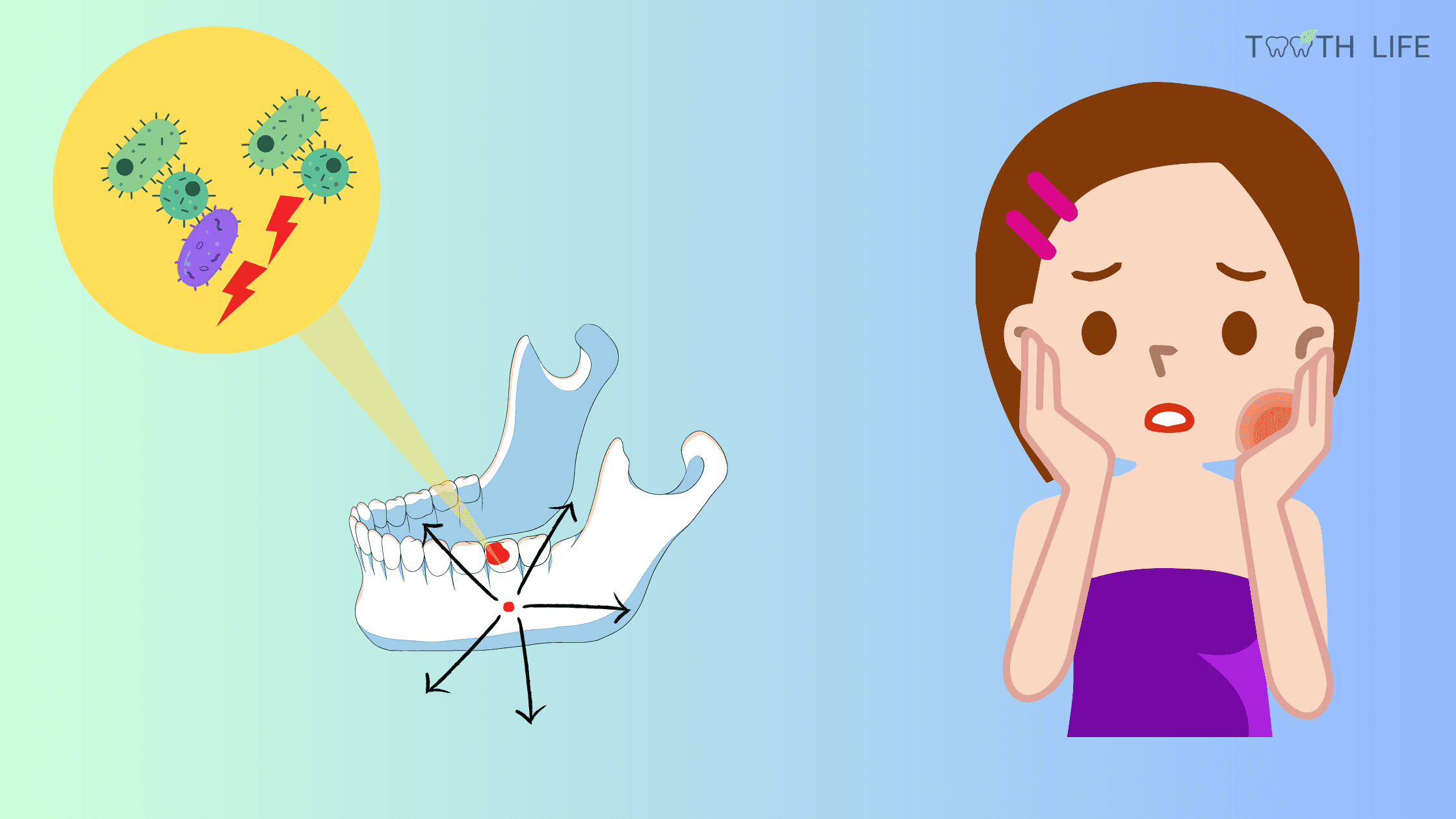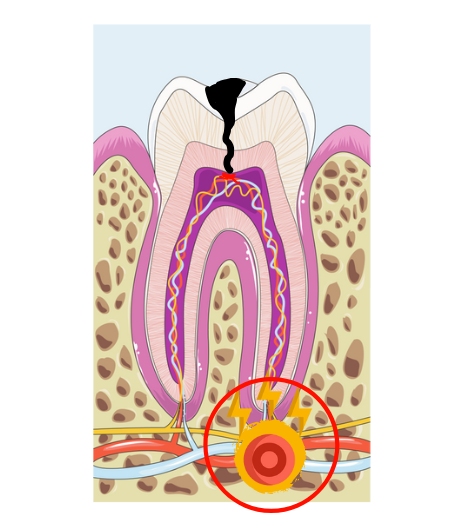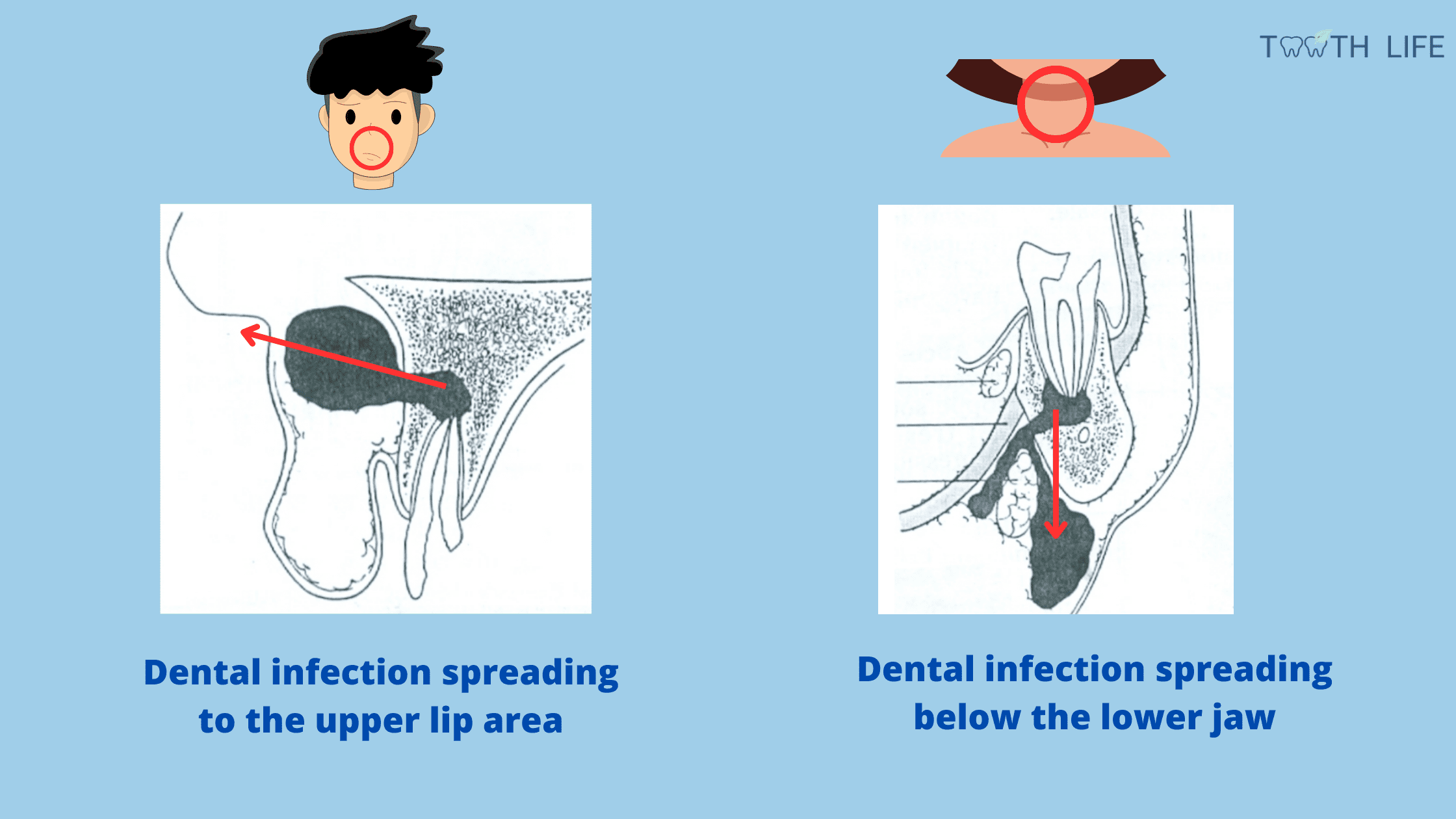The Potential of Tooth Infection to Spread to Your Jaw and Face
 Are you experiencing tooth pain or swelling that just won't go away? It could be a sign of something much more serious than a simple cavity.
Are you experiencing tooth pain or swelling that just won't go away? It could be a sign of something much more serious than a simple cavity.
A tooth infection can spread beyond the tooth and even into your jawbone and face, causing a condition known as osteitis and facial cellulitis.
These complications can lead to pain, swelling, and even life-threatening conditions if left untreated.
Don't let a tooth infection take over your life - learn more about these serious complications today.
In this article:
1. What is a tooth infection?
2. How can a tooth infection spread to surrounding tissues?
3. Tooth infection spreading to the jaw bone (AKA Osteitis):
4. Tooth infection spreading to the face (AKA Cellulitis):
5. Other complications of a spreading tooth infection:
6. How to prevent a tooth infection from spreading?
What is a tooth infection?
A tooth infection, also known as an abscessed tooth, is a bacterial infection that occurs in the pulp of the tooth.The pulp is the soft tissue inside the tooth that contains blood vessels and nerves.
There are several ways that bacteria can enter the tooth, including through a cavity, a crack, or a dental procedure.
When a tooth infection develops, it causes the pulp to die. The infection then spreads to the area around the root tip, called the periapex. This condition refers to periapical periodontitis.

The bacteria in the infected area then grow and produce toxins, leading to a pocket of pus and a gum boil, also known as a dental abscess.
If left untreated, a tooth infection can cause pain, swelling, sensitivity, fever, and bad breath.
However, the most serious consequence of an untreated tooth infection is that it can spread to surrounding tissues, such as the jaw bone and face. These complications should not be taken lightly, as they can sometimes be life-threatening.
How can a tooth infection spread to surrounding tissues?
The tooth is an organ that is surrounded by other structures. Bacteria can easily spread from the infected tooth to these adjacent tissues, which can cause inflammation, pain, swelling, and pus formation in the gums, jawbone, and face.The infection can also affect the nerves, muscles, and sinuses near the tooth, leading to other complications.
For example, if the infection spreads to the nerves, it can cause numbness, tingling, or a loss of sensation in the face and mouth.
Additionally, if the infection continues to spread and infect the jawbone, it can cause a condition called osteitis.
Tooth infection spreading to the jaw bone (AKA Osteitis):
Tooth infection spreading to the jaw bone, also known as osteitis, is a serious issue that can break down your jawbone, leading to facial and aesthetic problems.Osteitis can occur when bacteria from an infected tooth enter the bloodstream or directly infect the jaw bone.
So how does osteitis start?
Infection can cause inflammation in the jawbone, leading to increased pressure within it. This pressure can compress and block the blood vessels that supply essential nutrients to the bone. If left untreated, the bone may die off in some parts (by necrosis), which can cause a piece of the affected jawbone to come off.
Treatment of osteitis from a tooth infection may include antibiotics, painkillers, and surgery. Your dentist may recommend a root canal or extraction to remove the infected tooth and prevent further spread of the infection.
In more severe cases, surgery may be required to remove the affected portion of the jawbone.
Symptoms of tooth infection spreading to jaw bone:
- Pain in the affected tooth, jaw, or face
- Swelling in the jaw or face
- Fever and chills
- Difficulty opening the mouth or jaw stiffness
- A bad taste in the mouth or a foul odor
- Pus or drainage from the infected tooth or gums
- Visible redness and inflammation in the affected area
- A feeling of pressure or fullness in the jaw or face
- Teeth loosening
Tooth infection spreading to the face (AKA Cellulitis):
A tooth infection can also spread to the soft tissues of the face, including the cheeks, skin, and around the eyes. This condition is known as facial cellulitis, a serious complication of an untreated tooth infection.
Facial cellulitis can cause redness, swelling, pain, heat sensation in the affected area, and fever.
If left untreated, the infection can spread further and affect vital areas such as the neck, chest, and even the brain.
Treatment for facial cellulitis typically involves antibiotics to fight the infection and may also include draining any accumulated pus.
So if your tooth infection symptoms are getting worse or you're experiencing other physical signs like fever, malaise, or fatigue, it's crucial to seek dental care as soon as possible.
Other complications of a spreading tooth infection:
- Sinus infection: Sinuses are bony cavities located on each side of the cheeks. The infection of the upper back teeth can spread to these areas and cause inflammation, pain, pressure feeling around the cheeks, and nasal congestion.
- Ludwig's angina: The infection can spread to the area below the lower jaw and lead to a rare but serious infection called Ludwig’s angina. This complication can block the airway and cause breathing difficulties.
- Septicemia: A life-threatening condition in which the infection enters the bloodstream and causes a severe immune response.
- Endocarditis: Bacteria from a dental infection can travel through the bloodstream and reach the heart. Once there, they can infect the inner lining of the heart, with potentially fatal consequences.
- Brain abscess: It can occur when the infection spreads from a tooth to the brain. A collection of pus and bacteria in the brain can cause headaches, seizures, confusion, and other neurological problems.
How to prevent a tooth infection from spreading?
Here are some tips to prevent a dental infection from getting worse and spreading:- Maintain good oral hygiene practices, such as brushing and flossing regularly.
- Visit your dentist for routine check-ups and cleanings to detect any potential issues early on.
- Avoid consuming sugary and acidic foods and drinks that can harm your enamel.
- Seek immediate treatment from your dentist if you have any signs of a tooth infection.
- Follow your dentist's instructions on taking antibiotics and painkillers.
- Rinse your mouth with warm salt water or antiseptic mouthwash to reduce inflammation and infection.
- The prevalence of odontogenic maxillary osteitis at the Cocody University Hospital's Odontostomatological Consultation and Treatment Center (CCTOS), Abidjan (Ivory Coast): clinical and therapeutic aspects | Journal of Oral Medicine and Oral Surgery (jomos.org)
- Essentials of Oral Pathology Book by Swapan Kumar Purkait
- L'infection de la racine de votre dent n'est pas traitée (lecourrierdudentiste.com)
- Heart Valves and Infective Endocarditis https://www.heart.org/en/health-topics/heart-valve-problems-and-disease/heart-valve-problems-and-causes/heart-valves-and-infective-endocarditis
- What Is Sepsis? Symptoms and Treatment https://share.upmc.com/2017/09/what-is-sepsis/
